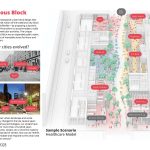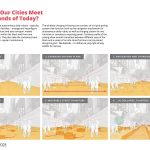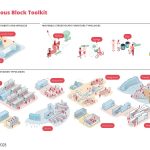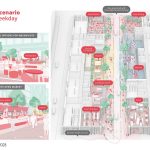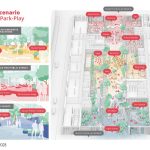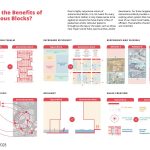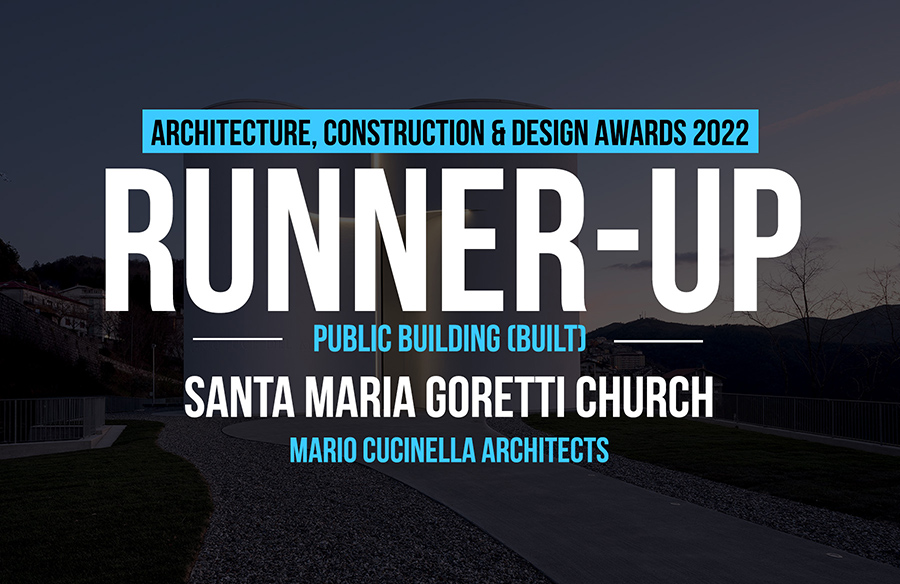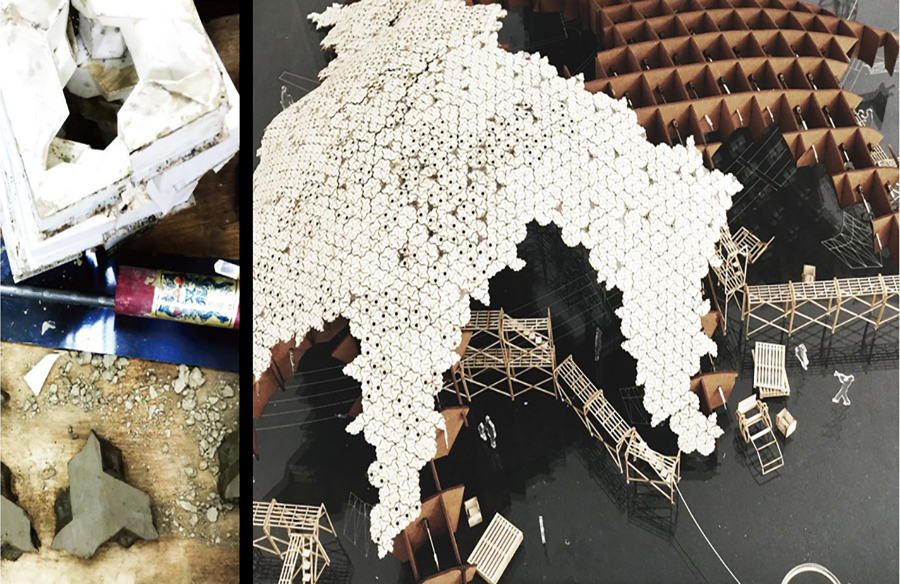An Adaptable Urban Block Prototype
Autonomous Block is a new urban block prototype challenging traditional, stagnant and inflexible city-block typology. The ultimate “pop-up” host, the Autonomous Block concept provides a dynamic ground plane that transforms the urban realm through integrated technologies, accommodating a wide range of pedestrian and vehicular activities. Autonomous Block’s elements are an expanded public realm, curb-less streets, moveable street furniture, and mobile program containers—supporting uses from retail to daycare to you-name-it. Each Block morphs as needed, shifting from pop-up weekend village environment to robust weekday mix for urbanites to customized public event space.
Rethinking The Future Awards 2023
First Award | Urban Design (Concept)
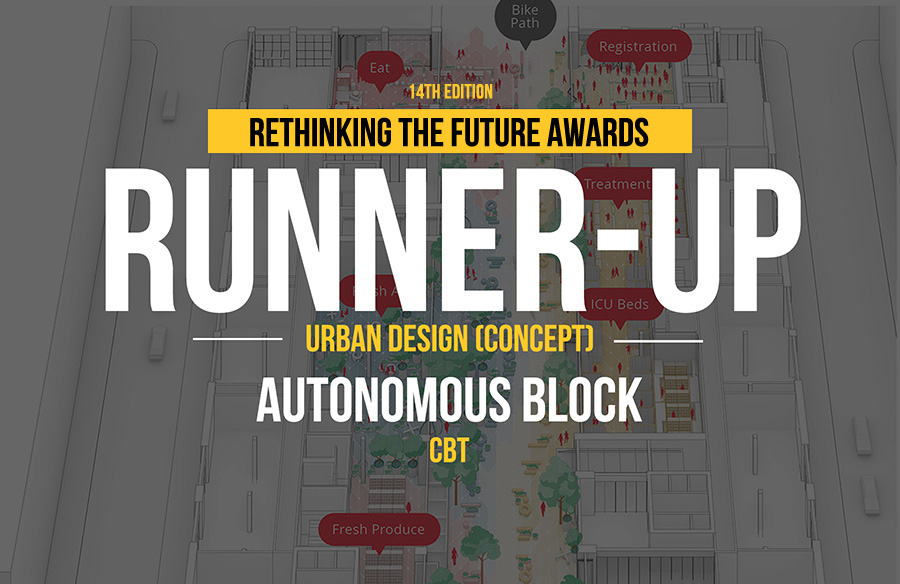
| Project Details | |
| Project Name: | Autonomous Block: Rethinking Urban Block Design |
| Category: | Urban Design (Concept) |
| Studio Name: | CBT |
| Design Team: | Sae Kim |
| Anthony Polidoro | |
| Devanshi Purohit | |
| Kishore Varanasi | |
| KelliLaurel Mijares | |
| Hyunsik Mun | |
| Area: | Varies depending on application of this prototypical urban block design |
| Year: | 2019 (Prototype design) |
| Render Credits: | CBT |
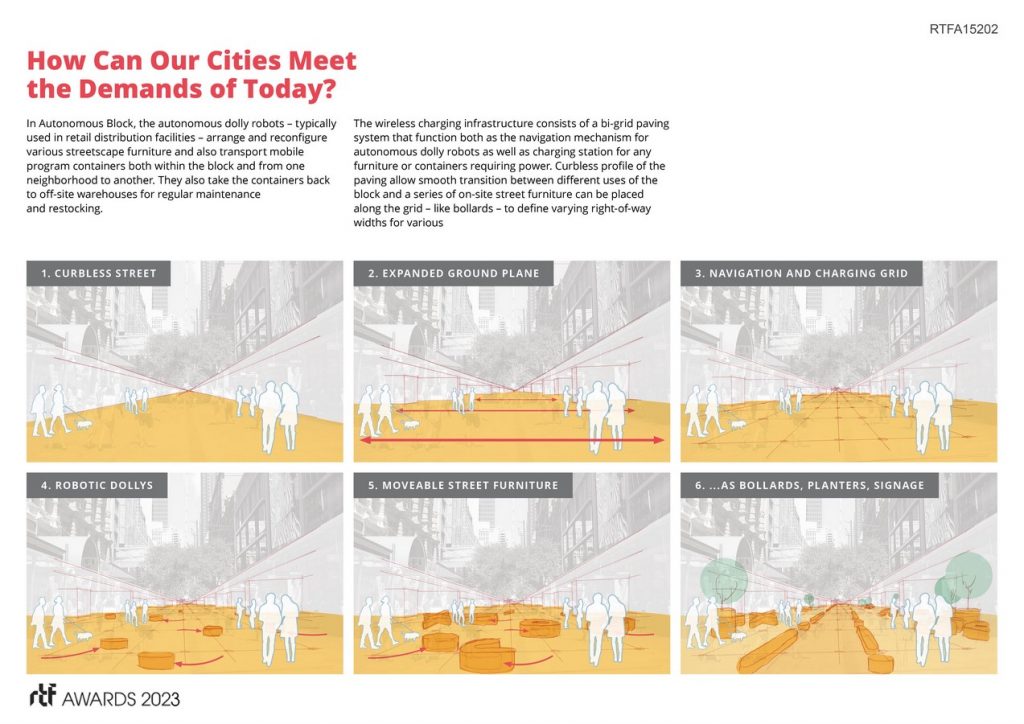
©CBT
Rethinking Streets
The typical city block hasn’t changed for a century, with little evolution in how sidewalks, curbs, streets, and storefronts are conceived. The United Nations projects 68% of the world’s population will live in urban areas by 2050, foreshadowing a decrease of urban open space. The Autonomous Block concept is innovatively answers to the question, “How do we rethink our streets to respond to the urban and social demands of the years to come?”
Location Matters
Highly responsive in its conceptualization, the Autonomous Block concept is intended for only certain urban blocks; it’s designed for application on streets that experience dramatic increases and decreases in pedestrian and/or vehicular patterns throughout the day or the week, like those near major transit hubs, sports arenas, and downtowns.
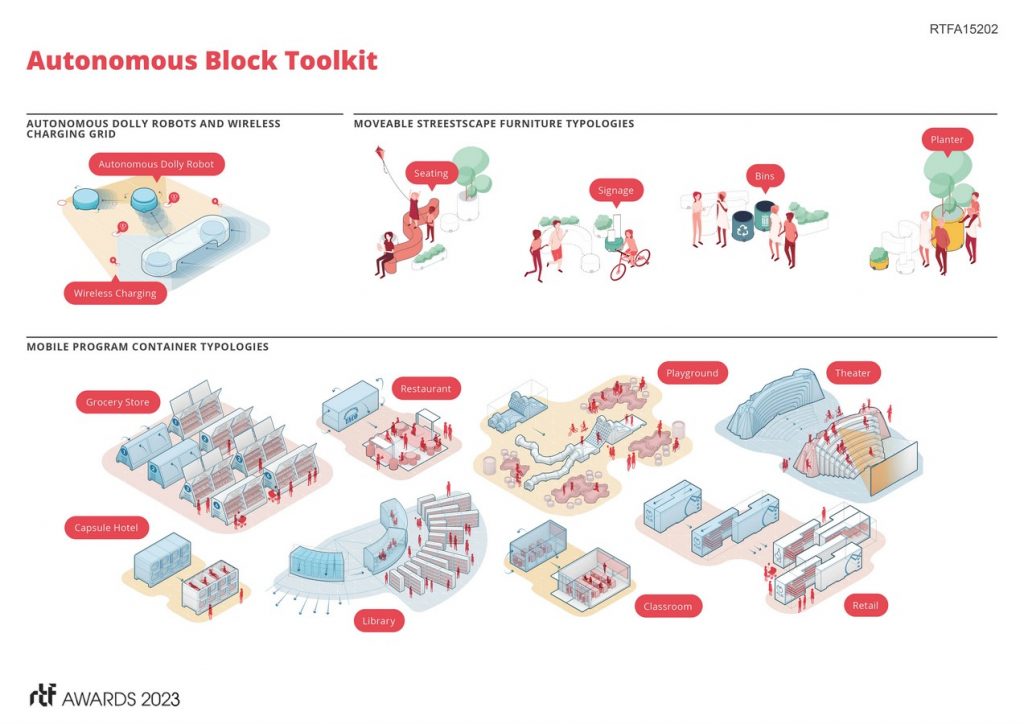
©CBT
Technology Empowering Urban Flexibility
Signature components of Autonomous Block are its use of autonomous dolly robots and a wireless charging grid infrastructure:
- Autonomous dolly robots—typically used in retail distribution facilities—are employed to arrange and reconfigure streetscape furniture and transport mobile program containers within the Block and between other Block neighborhoods. They also return the containers to off-site warehouses for maintenance and restocking.
- The wireless charging infrastructure is a bi-grid paving system functioning as the navigation mechanism for the autonomous robots and as a charging station for furniture or containers requiring power. The paving’s curb-less profile allows smooth transition between uses of the Block and placement of on-site street furniture along the grid to define right-of-way widths for vehicular uses.
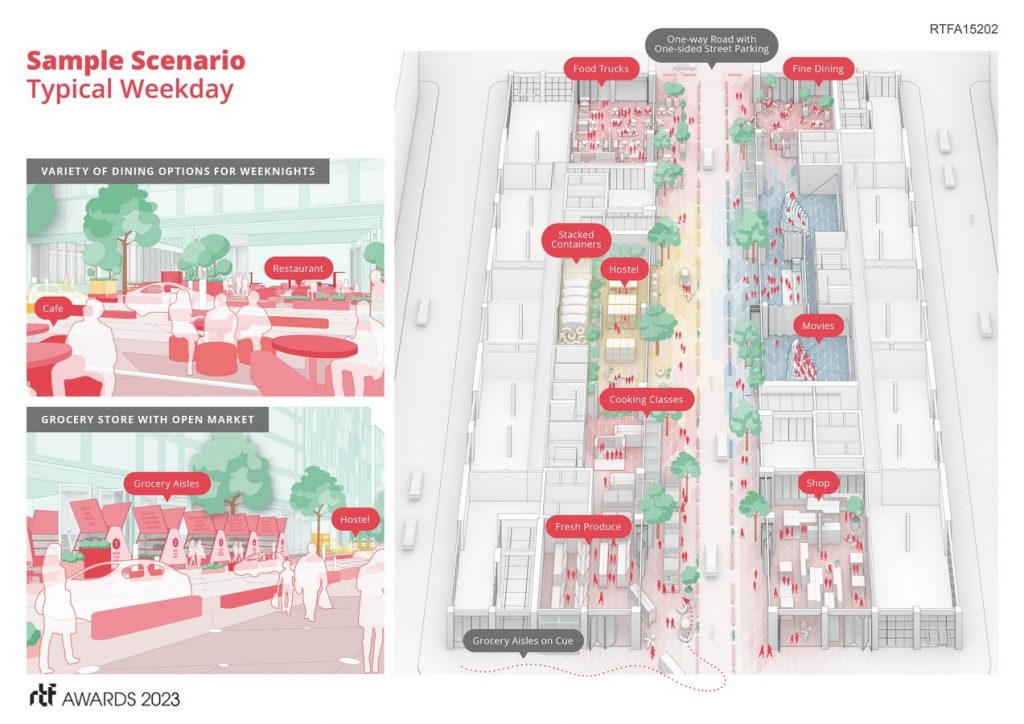
©CBT
Autonomous Block Benefits
- Enhanced public realm: unconfined to sidewalk width, the Block expands, providing pockets of space within building footprints.
- Efficient/varied urban space: a fraction of the space in conventional developments now houses the same amount of program—think retail, cafes, nursery schools, farmers’ markets—because program modules can be scheduled/moved from one Autonomous Block neighborhood to another through the week.
- Responsive city-living: the temporal/mobile nature of Autonomous Block provides the programming flexibility to respond quickly to changing urban-life needs.
- Resilience: In a 100-year storm, the kit-of-parts stack on-site or move to an off-site warehouse facility. In a pandemic, the Block provides spaces for care and services.
- Pro-small business/pro-entrepreneur: small businesses’ risks/upfront costs are reduced because the Block concept supports short-term leases. Fledging entrepreneurs test the waters without extensive bricks-and-mortar investment.
Envisioned as an adjustable layer for the urban realm, Autonomous Block transforms the ground level of our cities to be more livable, resilient, and efficient.
- ©CBT
- ©CBT
- ©CBT
